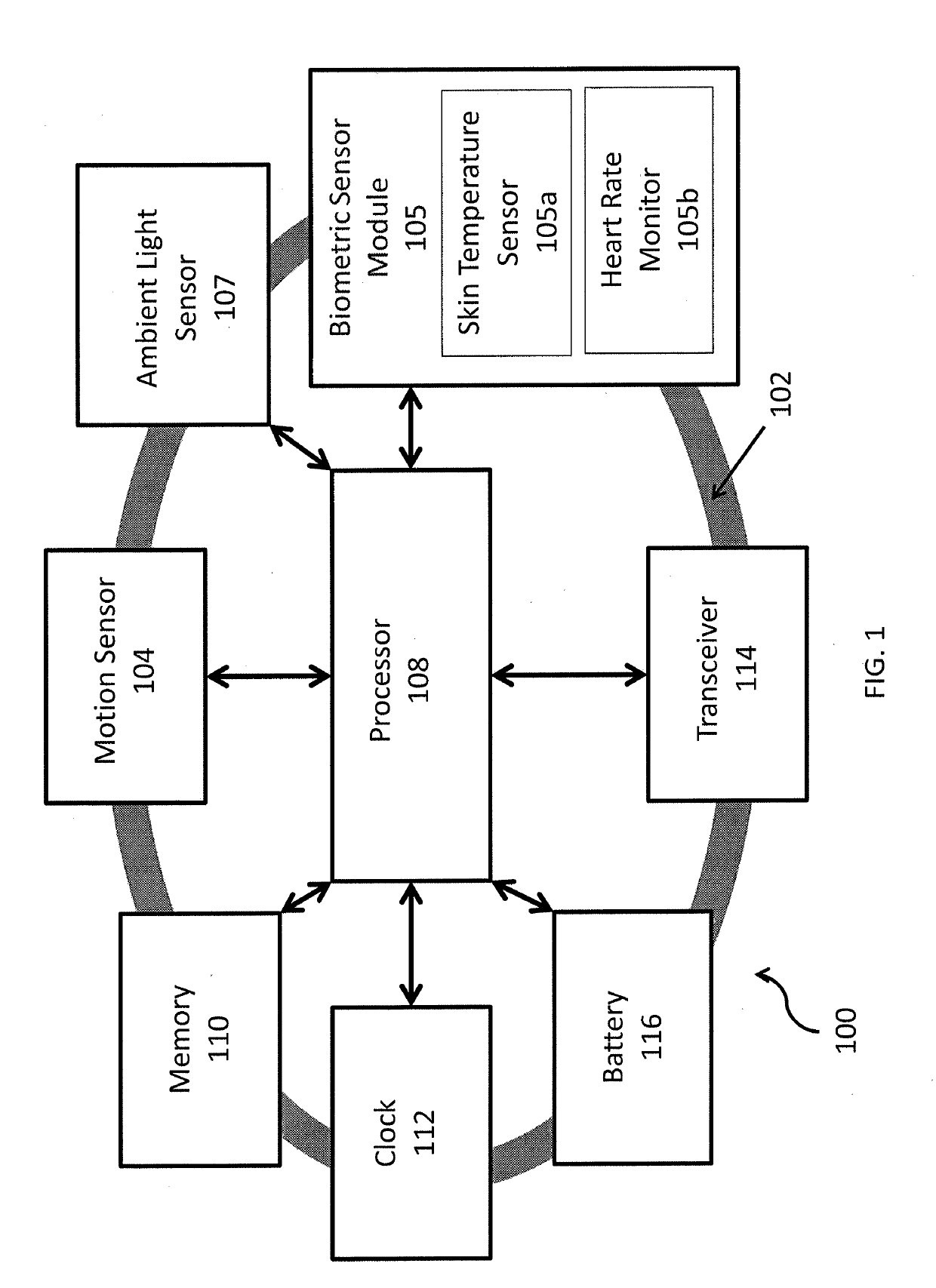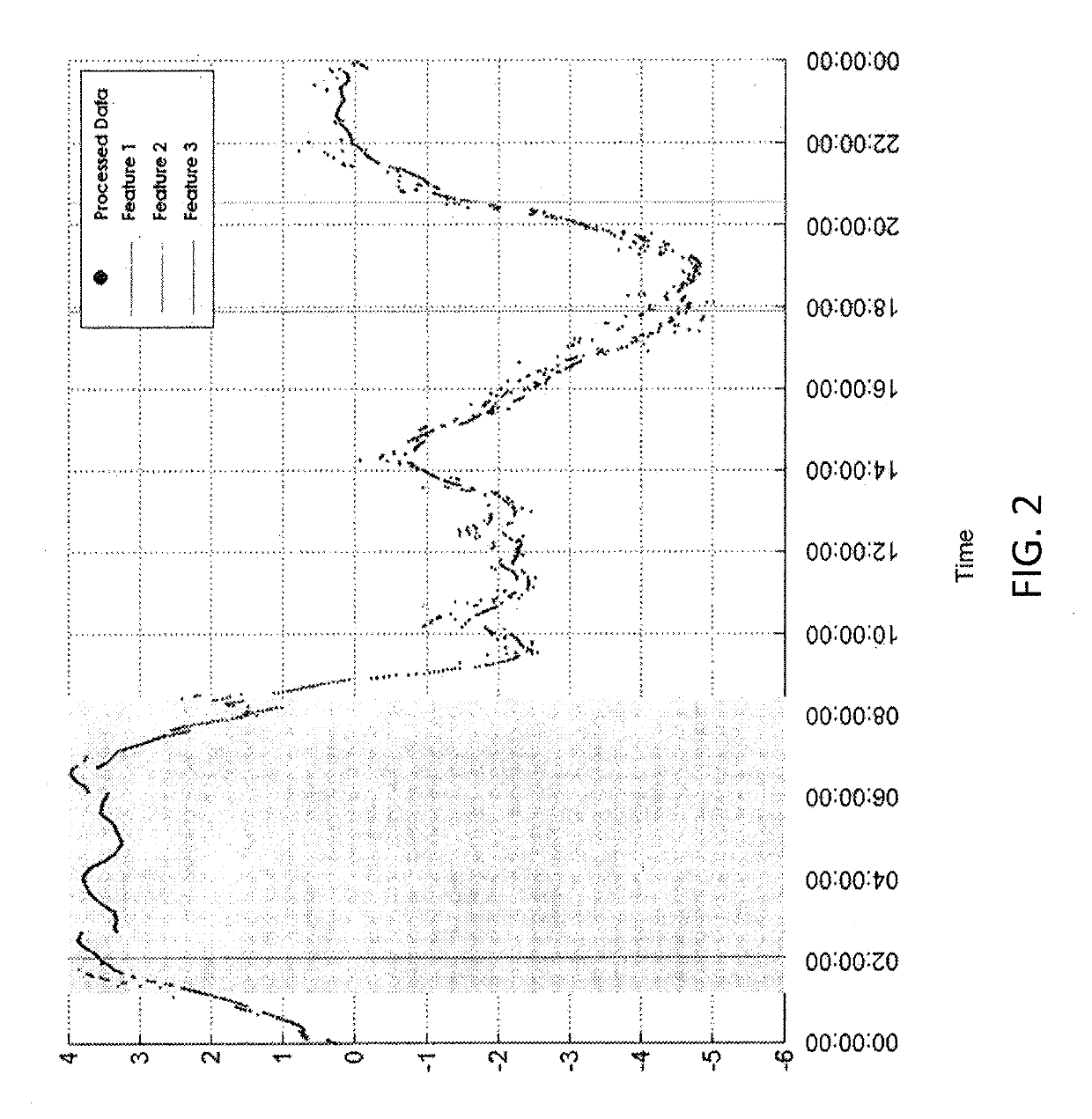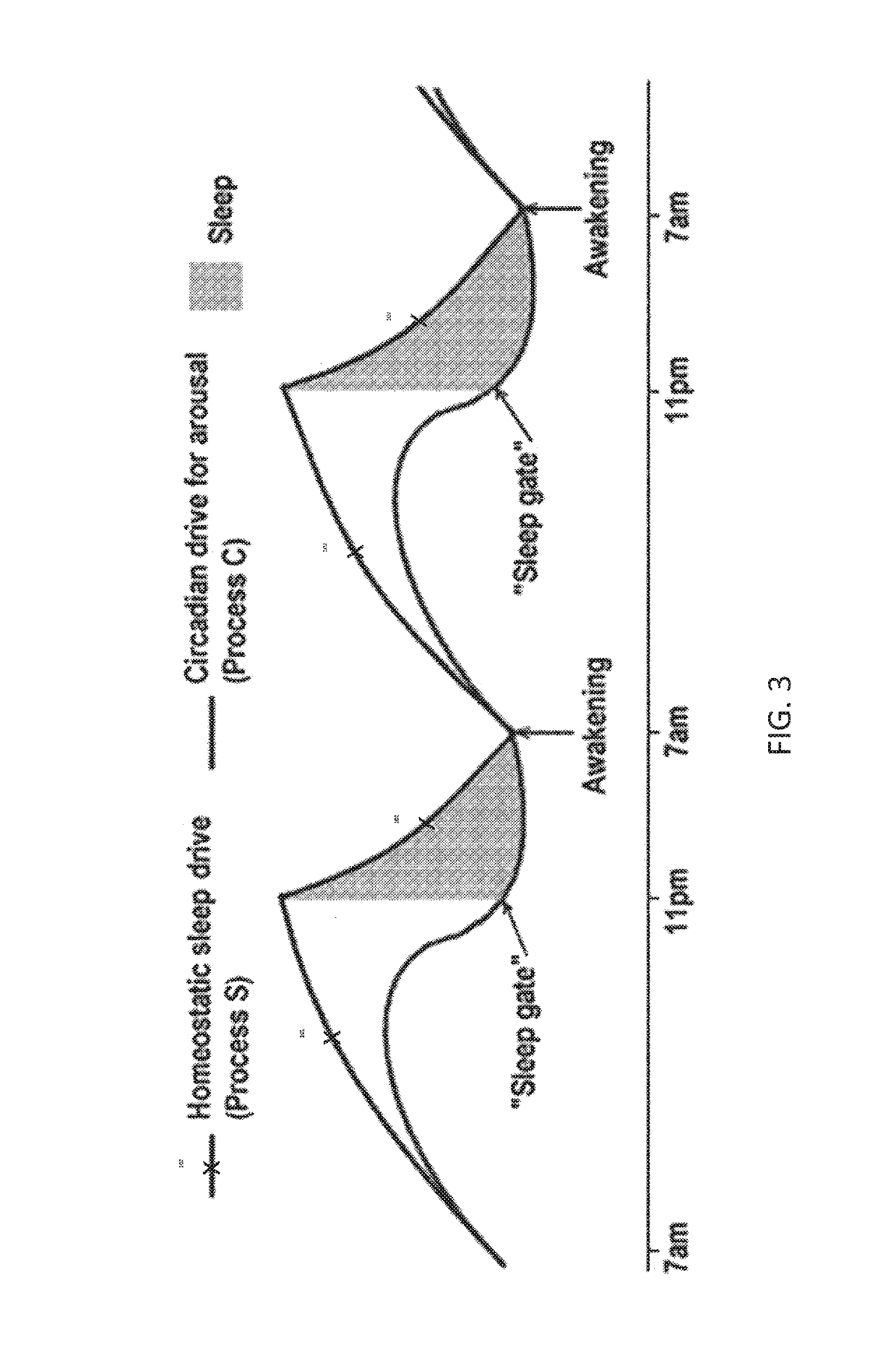Alertness prediction system and method
a technology of alertness and prediction system, applied in the field of alertness prediction system and method, can solve the problems of high accuracy of the actual circadian rhythm model of an individual, misses predictions, etc., and achieves the improvement of the sleep-wake homeostasis aspect of the model, the accuracy of the individual's sleep and wake determination, and the effect of improving the fatigue prediction and estimation
- Summary
- Abstract
- Description
- Claims
- Application Information
AI Technical Summary
Benefits of technology
Problems solved by technology
Method used
Image
Examples
Embodiment Construction
[0022]Aspects of the invention provide a wearable device having a bio-mathematical model which predicts fatigue levels for an individual using various metrics. Certain aspects involve a two-process algorithm, a type of bio-mathematical model, which predicts alertness levels by using accurate measures of actigraphy and estimations of an individual's circadian rhythm. The wearable device may also be connected to or in communication with other systems such as, for example, a smart phone application or other “smart” devices. Both actigraphy and circadian rhythm estimations can be made using measurements of the individual's movement, body position, heart rate, and distal skin temperature. The alertness prediction of the bio-mathematical model can be further improved in accuracy by including additional objective and subjective measures, which are described in further detail herein. The bio-mathematical model enables improvements due to closed loop feedback and through continuous learning ...
PUM
 Login to View More
Login to View More Abstract
Description
Claims
Application Information
 Login to View More
Login to View More - R&D
- Intellectual Property
- Life Sciences
- Materials
- Tech Scout
- Unparalleled Data Quality
- Higher Quality Content
- 60% Fewer Hallucinations
Browse by: Latest US Patents, China's latest patents, Technical Efficacy Thesaurus, Application Domain, Technology Topic, Popular Technical Reports.
© 2025 PatSnap. All rights reserved.Legal|Privacy policy|Modern Slavery Act Transparency Statement|Sitemap|About US| Contact US: help@patsnap.com



